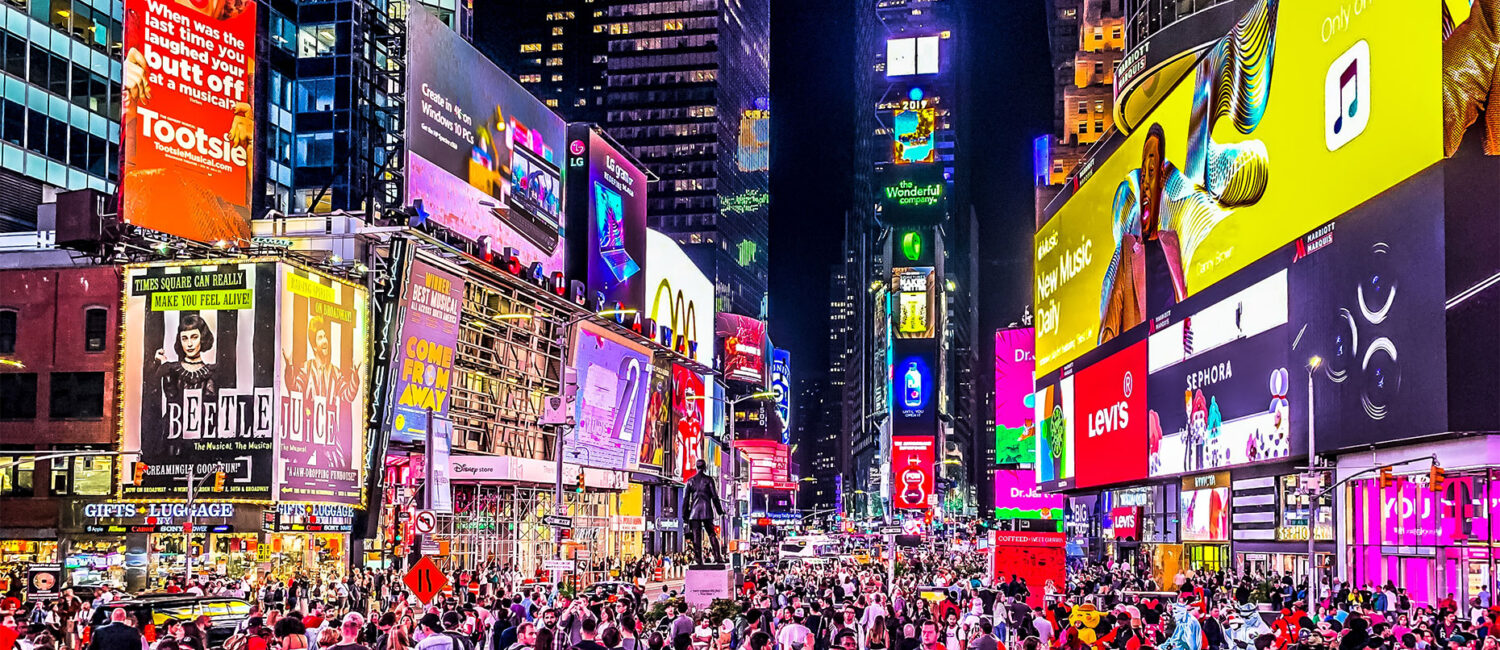There’s No Lying About The Impact Of Digital OOH

If you asked a random person if they knew what digital out-of-home advertising (DOOH) is, they’d probably say “no” – and they’d be lying. Well, sort of.
While they likely aren’t familiar with the term (or the Homer Simpson-esque acronym), they have almost certainly been exposed to it. In fact, digital out-of-home is one of the nation’s most widespread ad formats. If you’ve ever waited for a train, checked out at a store or gone down a mall escalator, you’ve been exposed to DOOH. Though the bright lights of Times Square might be the most famous example of DOOH, it can be found almost anywhere.
Think of DOOH advertising as digitized, eye-catching media seen when consumers are out of their homes (“out-of-home”… get it?) in places they walk and drive past every day. However, unlike traditional OOH media, DOOH gives advertisers more creative flexibility, more defined targeting, and more accurate analytics. But perhaps the most appealing thing for advertisers is the abundance of DOOH ad formats.
So where do we actually see DOOH? Let’s place into three buckets:
- Large format
- Place-based
- Point-of-purchase
Large format DOOH ads are high-impact messages displayed in high-traffic locations, positioned to reach a mass audience and enhance brand awareness. Examples include:
- Highway billboards
- Bus and transit shelters
- Urban panels
- Side-of-building displays
- Sidewalk displays
- City Centers
Place-based DOOH ads use smaller-scale media displayed in locations where consumers spend a lot of their time, using tailored messaging specific to that location, such as:
- Restaurants
- Movie Theaters
- Gyms
- Hotels
- Universities
Point-of-purchase DOOH, like its place-based sibling, uses messages displayed in retail-based locations such as:
- Gas Stations
- Grocery Stores
- Liquor Stores
- Malls
- Pharmacies
DOOH advertising’s growth as a medium is due to this broad range of opportunities for advertisers, along with its’ automation and effectiveness. Certainly, it’s a perfect advertising channel for most of our clients here at B+L, especially ones in the tourism industry. DOOH ads are all about creating memorable, engaging moments for consumers which leave a lasting impression that will ultimately impact purchase behavior in the future.
Let’s take Wisconsin Dells for example. Leveraging DOOH is an excellent way to showcase eye-popping images of the destination’s iconic waterparks and other attractions in high traffic areas that provide daily brand exposure to a wide audience. The visually appealing, attention-grabbing nature of Wisconsin Dells’ digital assets are perfect for any DOOH placement.
By using different types of DOOH ads, brands can essentially reach their audience wherever they want to, whenever they want to. Who cares if anyone knows its technical name? DOOH reaches them in ways few other types of media can. And that’s no lie.

